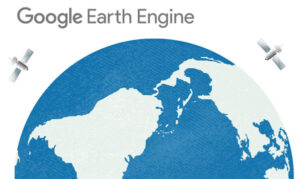Geospatial analysis plays an increasingly important role in how we understand and respond to the world around us. With the rise of satellite imagery and open environmental data, professionals across fields are turning to geodata. As a result, experts in climate science, agriculture, disaster response, and urban planning can track change, measure impact, and support smarter decisions.
At the center of this shift is Google Earth Engine (GEE). It’s a cloud-based platform that lets users process and analyze massive datasets—without the need for high-performance local hardware. Whether you’re monitoring deforestation, mapping urban growth, or exploring climate impacts, Earth Engine puts advanced geospatial tools within reach.
GEE stands out for its access to petabytes of satellite imagery from missions like Landsat, Sentinel-2, and MODIS. More importantly, it pairs that data with scalable cloud computing. This means you can perform detailed analyses quickly, from anywhere. Because it uses a web-based code editor and JavaScript, even beginners can get started with just a little guidance.
In this course, you’ll build a strong foundation in GEE. You’ll learn how to explore, filter, analyze, and visualize satellite data to support your research, professional goals, or learning journey. Given the growing importance of geospatial tech in global and local problem-solving, there’s no better time to get started.
What will you learn
This course offers a step-by-step introduction to Google Earth Engine. To begin with, it blends key concepts with hands-on practice, helping you learn by doing and build confidence along the way.
You’ll start by exploring GEE’s main features. First, you’ll set up your account, access the Code Editor, and get familiar with the interface. Next, you’ll work with satellite datasets from Landsat and Sentinel missions. Then, you’ll learn how to search, filter, and apply these datasets to real-world scenarios.
Another key element of the course is understanding spectral bands. You’ll use them to study vegetation, water, and land use. Moreover, you’ll write basic JavaScript scripts to process imagery and visualize results using natural and false color composites. In addition, you’ll learn to create cloud-free images — a crucial step in producing clear, reliable satellite outputs.
As you continue, you’ll troubleshoot common coding errors and learn how to structure your scripts more efficiently. By the end, you’ll know how to navigate GEE with confidence. Consequently, you’ll be ready to run independent geospatial projects and explore more advanced techniques like layering datasets or applying dynamic filters.
Why choose this course
At Geo-ICT, we go beyond teaching software. Instead, we focus on building practical, future-ready skills. Whether you’re a student, researcher, or working professional, this course gives you a strong foundation in geospatial analysis with Earth Engine.
Here’s why learners choose this course:
- Led by experts with real-world experience in GEE and GIS
- Beginner-friendly, requiring no prior coding or GIS background
- Hands-on approach, using real satellite data in practical examples
- Preparation for next steps, from advanced courses to your own projects
In short, you won’t just learn tools—you’ll learn how to use them effectively.

